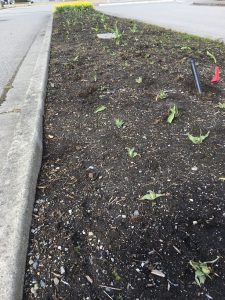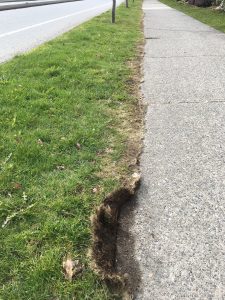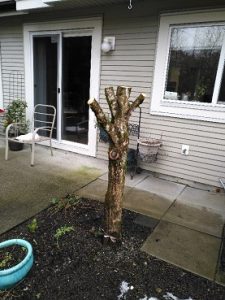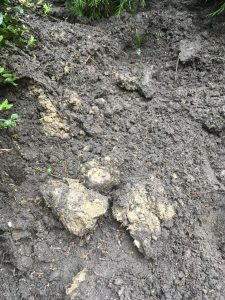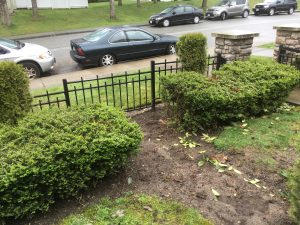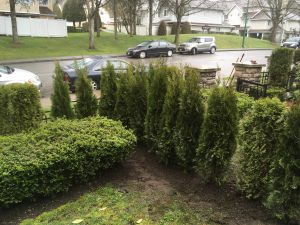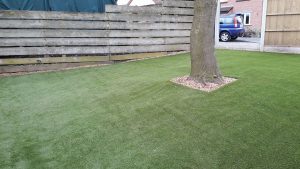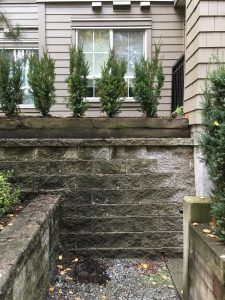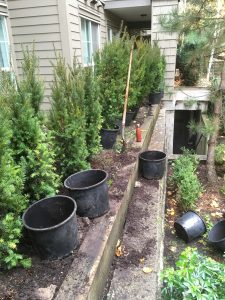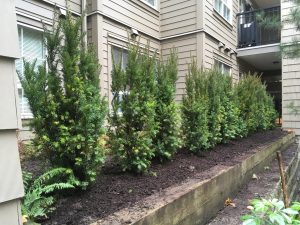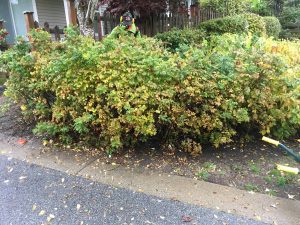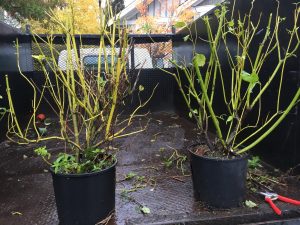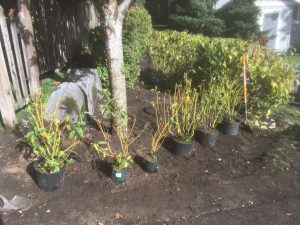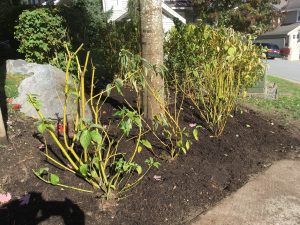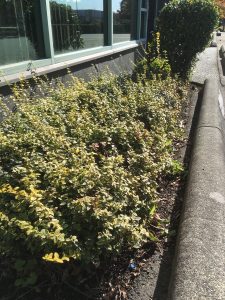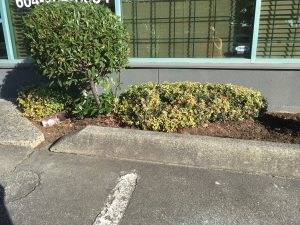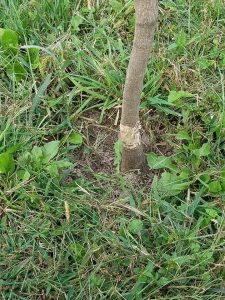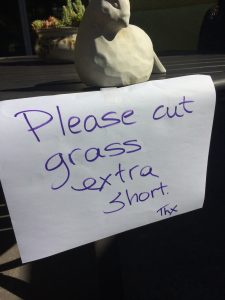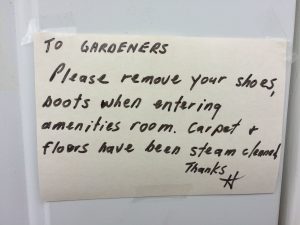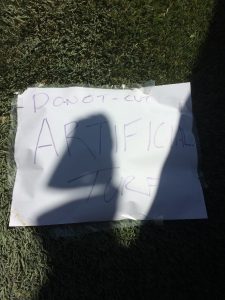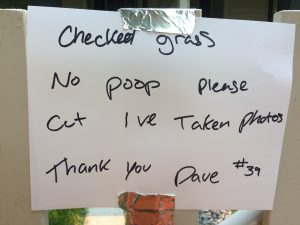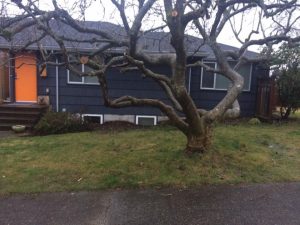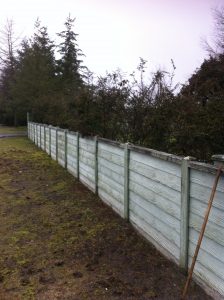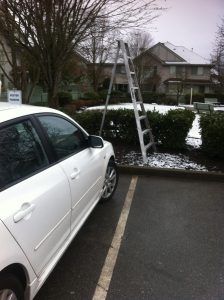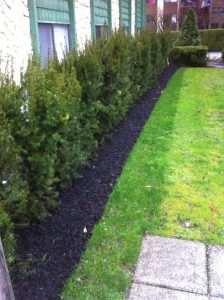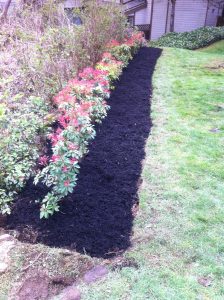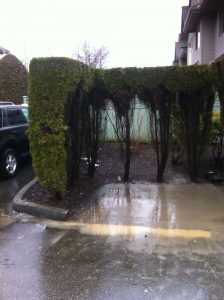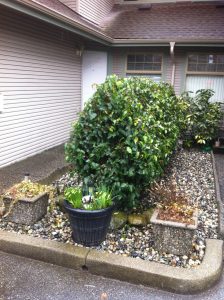Sometimes I see craziness in the landscape and it stays on my mind for so long, I lose sleep. Below are some examples of cases which could have been prevented by a bit of extra care. Yes, I know, the world didn’t end but still I want to see beautiful, healthy landscapes that have the ability to uplift people.
Spring show
Not much of a show, is it? This is a recently taken over site and a high-profile access spot. Considering the poor tulip show I am almost certain this bulb install is more than one season old. If it isn’t then the bulbs must have been planted at varying depths which would cause them to come up at different times.
Unlike daffodils, which come back every year nicely and can therefore be naturalized, tulips aren’t as reliable after one season. It’s best to pull them and re-do the design. That’s my plan for this fall.
Sidewalk edging
This is horrific lawn care work. Obviously, this boulevard hasn’t been bladed in a long time and I wonder why. All it takes is one machine and a new blade to fix. This is a high-profile boulevard and the edging should be sharp. Perhaps the contractor considered it to be city responsibility. Pictures like this transform into nightmares while I sleep.
Watering
Whenever I install new plants I feel responsible for their well-being. Here, I installed Portuguese laurels (Prunus lusitanica) as replacement for cedars (Thuja occidentalis ‘Smaragd’). The owners were advised to water frequently so the shrubs could establish well. Overall they are doing well but this poor specimen isn’t.
Butchered trees
Many landscape maintenance contracts run twelve months but some only ten. When the contractor is gone for two months some owners take liberties with strata property. We found this stump when our maintenance contract resumed.
This is very wrong. The cuts are so severe the tree is bound to notice and send out many shoots to compensate, assuming it has enough resources to do it. Also, cuts over 4″ in diameter heal badly and are likely to invite diseases into the tree. Lastly, this sort of ‘pruning’ destroys the tree’s natural shape and beauty.
You can either prune it properly or remove it completely. This work is horrendous.
Poor drainage
Our West Coast soils have lots of clay in them which means they drain poorly. I know of one site which is very bad for drainage. The strata council spent thousands on French drains and sand top-dressing.
But as I learned at a recent VanDusen Botanical Garden seminar, sand just sits on top of the clay. It has no effect on it. Much better approach would be to top-dress the lawns with organic material which could potentially break up or loosen the clay. I’m hoping next year this is what the strata council tries instead of more sand.
Top dressing with sand is expensive, labour intensive and it doesn’t work.
There you have it. I’m hoping that by posting this blog I will be able to let go and thus sleep better at night. I want to dream about spring and all of its glory.


